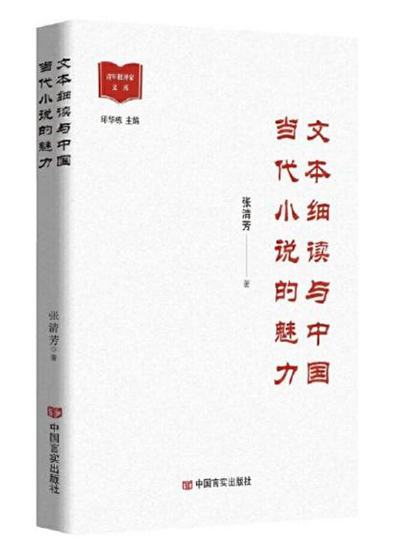A close reading of contemporary novels

Close Reading of Texts and the Charm of Contemporary Chinese Fiction
Close Reading of Texts and the Charm of Contemporary Chinese Fiction, by Zhang Qingfang, a professor from the College of Chinese and Literature at Hebei Normal University (HEBTU), adopts close reading as its primary method of literary criticism, selecting prominent works of seven contemporary Chinese writers for analysis and interpretation.
With this work, the author strives to strengthen the sense of history in close reading and the continuity of textual production. Each chapter focuses on a certain writer or work, examining it in relation to other relevant fiction texts. If the core fictional text of each chapter is regarded as the original point, these pertinent texts are the radiation points deliberately chosen to build logical frameworks.
First, Zhang reviews each text with a dynamic perspective, highlighting the value of specific textual points within the linear progression of an author’s career. Zhang’s insightful discovery regarding Zong Pu’s “Red Beans complex” is particularly noteworthy. The book points out that Zong repeatedly uses characters from “Red Beans” as prototypes in her subsequent works, continuously reproducing or rewriting the protagonist’s romantic outcomes, while thoroughly analyzing the various reasons for the formation of different endings.
Second, the author uses other writers’ fictional texts or theories as backing. For example, when re-reading Ru Zhijuan’s “Lily,” the author draws on Mao Dun’s evaluation of “Lily” in “Talking About Recent Short Stories” and his requirements for short stories in “A Try of Reading Short Stories.” When discussing the portrayal of the typical character of the young correspondent, Zhang refers back to Lu Xun’s exploration of the “synthesis” of character images in his essay “How Do I Start a Novel,” to argue the era-specific characteristics of contemporary Chinese revolutionary fiction exemplified “Lily” and its inheritance of modern fiction writing philosophy.
In addition, Zhang clarifies the differences in content between various versions of the same novel. For example, in reevaluating Ah Cheng’s “The King of Chess,” the author noted that at the end of the earliest version, the “King of Chess” Wang Yisheng chose to give up the game, while in later versions of the story, this ending is omitted. Such changes reflect the author’s adjustment to the contemporary trend of “root-seeking” in literature.
Zhang attaches great importance to the historical coherence of fictional creation, detecting the correlation between a work and those born before and after it through extensive comparison and textual evidence on the temporal thread. This renders any works mentioned in the book not an isolated island, but a node in the development history of contemporary Chinese fiction.
Hu Jingmin is a professor from the College of Chinese and Literature at HEBTU.
Edited by YANG LANLAN
